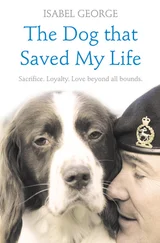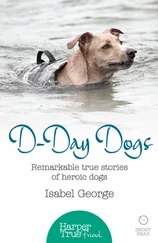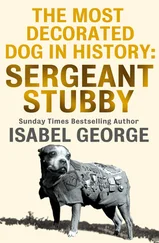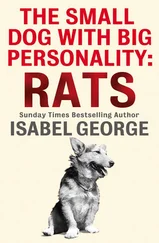As the sun rose the next morning, the men could see Gander’s body still lying on the roadside. It was trapped in the open ground between the two fighting forces where no one could reach him. All the time the men were being forced back by the enemy soldiers, making it impossible to rescue their friend’s body. Fred Kelly was Gander’s closest friend and the sight of the dog lying dead was more than he could bear. He had served with that dog alongside him since the regiment was stationed at Gander Airfield. They had travelled together the thousands of miles by train and boat to fight on the front line in Hong Kong. They had shared so much together and to have the friendship end this way without a goodbye or being able to bury Gander’s body was too painful. ‘I think my pals were afraid to tell me that the dog was dead. But I could see that he was dead and I hated that I couldn’t go near. To think he was gone hurt me so much and I’m not ashamed to say that I cried. I missed my old pal so much.’
On Christmas Day 1941, Hong Kong was forced to surrender to the Japanese Army. Fred Kelly and his fellow survivors were ordered to come forward and were immediately transported to prisoner of war camps. Those who survived the horror of the camps returned home to Canada but they never forgot their mascot dog, Gander. The men were taken prisoner before they had the chance to collect Gander’s body from the roadside where he died. The image of the dog lying there haunted the men for all the time they were prisoners of the Japanese and afterwards in peacetime. They never forgot Gander’s bravery and the way he made the ultimate sacrifice for his friends. Those who were saved that cold night in December knew they owed their lives to the dog and they still harboured the hurt they felt when they had to leave him behind.
The exact time of Gander’s death is unknown but it’s almost certain that his war ended in the early hours of 19 December, within a few hours of the death of another war hero, Sergeant-Major John Osborn. Osborn, an English-born veteran of the First World War, was the first Canadian to receive the Victoria Cross in the Second World War, and it was the only VC awarded for action during the battle for Hong Kong. On the night that Gander saved the lives of seven of his friends in the Royal Rifles of Canada, Sergeant-Major Osborn of the Winnipeg Grenadiers was leading an attack on Mount Butler just a few miles away. Having taken the hill and held it for three hours with only bayonets for weapons, his company was finally forced out by enemy gunfire. Separated from the main battalion, Osborn ignored the rattle of enemy machine guns to gather his men together and lead them to a safer position. When the Japanese began throwing grenades, Osborn began throwing them back. For a while he kept pace with the constant stream of missiles but suddenly one landed too far from his reach. Instinctively, Osborn shouted to warn his men away as he selflessly dived onto the grenade. He was killed instantly but his bravery saved the lives of many others.
Fifty-four years after the fall of Hong Kong a group of veterans were relating the story of Sergeant-Major Osborn to Jeremy Swanson, commemorations officer of the Canadian War Museum. Their memories were to be included in a special exhibition to honour the heroes of the battle in which over 300 Canadians lost their lives and 500 were wounded. The veterans, many of them injured during the fighting for Hong Kong and then held for three years as Japanese prisoners of war, were describing Osborn’s selfless act of bravery when one of the men said, ‘Yes…just like that goddam dog!’ It was the start of the conversation that the men had been waiting to have for over half a century. They wanted to relate, not how they had suffered but how a huge, brave Newfoundland dog had saved their lives. They told of the dog’s courage and companionship and how they had always wanted a medal for Gander. They wanted the world to know about their gallant mascot.
In Ottawa, Canada, on 27 October 2000, Gander’s handler, Fred Kelly, accepted the PDSA Dickin Medal -the medal recognized internationally as the animals’ Victoria Cross – on behalf of Gander. The medal is the highest honour any animal can receive for bravery in conflict and it was the day the veteran soldiers and their families had longed for. For Fred Kelly it was, he said, ‘the best day of my life!’ Gander’s Dickin Medal went on to form a proud part of the Canadians’ Defence of Hong Kong exhibition at the Canadian War Museum in Ottawa. To the veterans who meet each year to remember friends fallen and heroes lost, Gander is a hero still.
The Hong Kong Veterans Association of Canada (HKVAOC) is still a very active group of veterans and their families, who continue to fight for the recognition of that period of sacrifice. In August 2009 they succeeded in seeing the unveiling of a memorial wall depicting the battle and the names of the people lost in the conflict. The unveiling was a proud and long-awaited moment for the surviving veterans of the Battle of Lye Mun. It was also the foundation stone for the memorial that will go on to feature a bronze of Canada’s canine hero – Gander.
During the battle for Hong Kong Gander proved that he was a ‘soldier dog’. He was no longer a child’s pet, he was a war dog who slept, ate and drank only when he was not facing the enemy. Gander was not trained to be a messenger or a guard dog, like so many other pet dogs were during the Second World War. He just found himself on active service and did what he had done from the start – he gave his friends comfort, companionship and a cosy reminder of home so very far away. But in the throes of battle, Gander was the soldier dog that the hostilities made him.
Gander is now recognized as a Canadian hero of the Second World War. But to his soldier friends he will always be their best pal.
Judy – Prisoner of War 81A Gloergoer, Medan
‘She was in her short lifetime an inspiration of courage, hope and a will to live, to many who would have given up in their time of trial…
(Frank Williams, Leading Aircraftsman, RAF)
‘Where’s Judy? Has anyone seen her?’
British warship HMS Grasshopper had been torpedoed. Out of the dark, cold and oily water a sailor shouted to his shipmates in the hope that someone had seen Judy, the ship’s mascot. Just moments before the ship was hit, Judy was in her usual place enjoying extra rations in the ship’s galley. She belonged to the entire crew and they all looked after her. She was a lucky mascot who, on her previous ship, HMS Gnat , had been shelled and almost drowned in the Yangtze River. It seemed Judy was in the wrong place at the wrong time once again.
When Singapore fell to the Japanese in February 1942, Grasshopper , a 585-ton river gunboat, left Keppel Harbour in Singapore, bound for Java, her sister ship HMS Dragonfly alongside her. Spotted by a Japanese seaplane both ships were dive bombed. Grasshopper , already battle-scarred from the Malaya-Singapore campaign, took a hit under her bow. Commander Hoffman decided to lay-up his ship in a group of islands to the north of Sinkep, but two miles short of safety the ships came under fire again. Two formations of 81 Japanese bombers passed overhead. Nine of the planes at five-minute intervals dropped their bombs and a mile from land the Grasshopper was hit astern and set on fire. Many of the 75 crew and 50 passengers (Japanese POWs, Royal Marines, Army officers and civilians) jumped overboard and swam for their lives as the commander beached his ship, which took two more hits before it had to be abandoned.
The survivors, marooned on one of the tiny uninhabited islands in the region, gradually gathered together on the sand. They were in desperate straits. There was very little food to salvage from what was left of the Grasshopper and there was no fresh water. Judy had suddenly appeared in the group, much to the relief of the remaining crew. They had lost sight of her in the mayhem of the bombing and assumed she had run for cover in the depths of the ship. Wherever she had been hiding she had, at some stage, made the wise move to head for the water. Weary and covered in oil, the bedraggled dog wandered between the few survivors. The Grasshopper
Читать дальше












